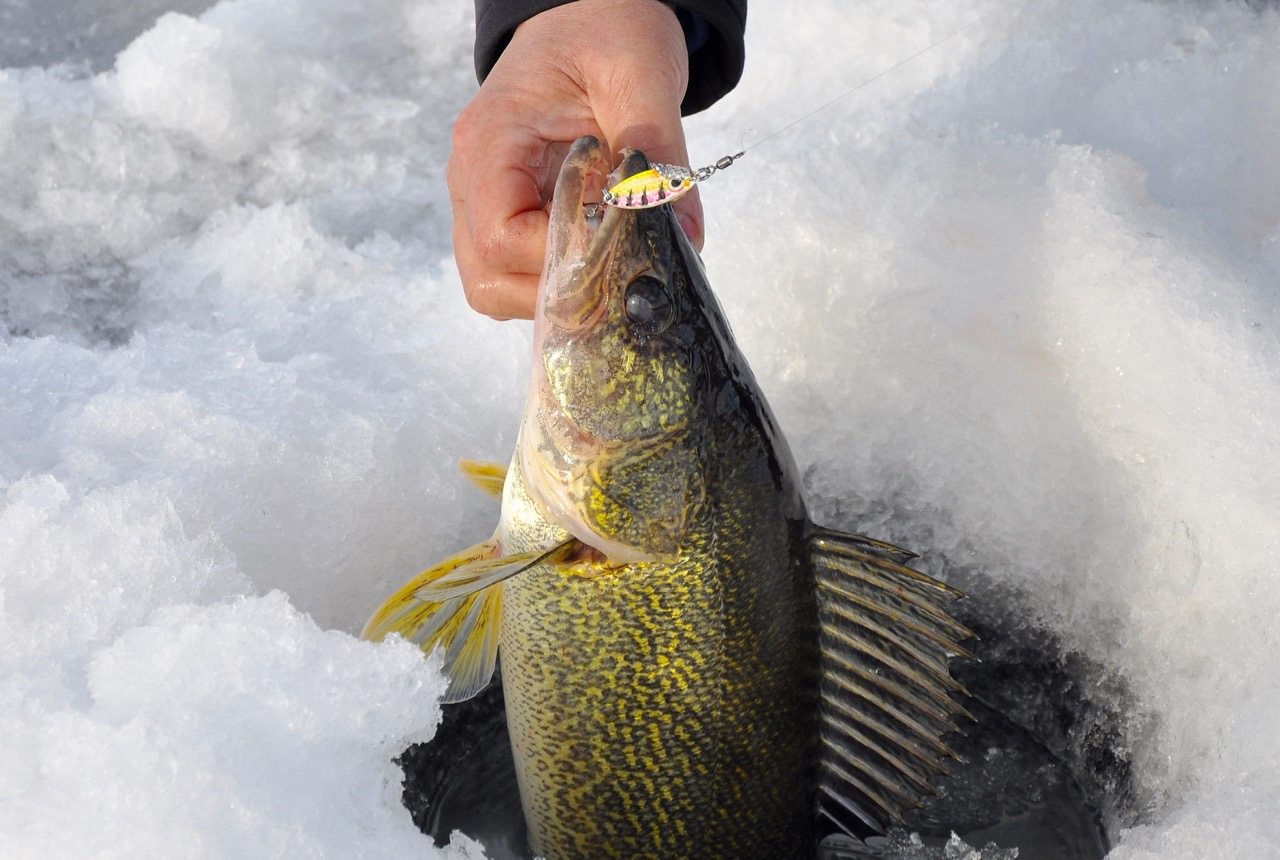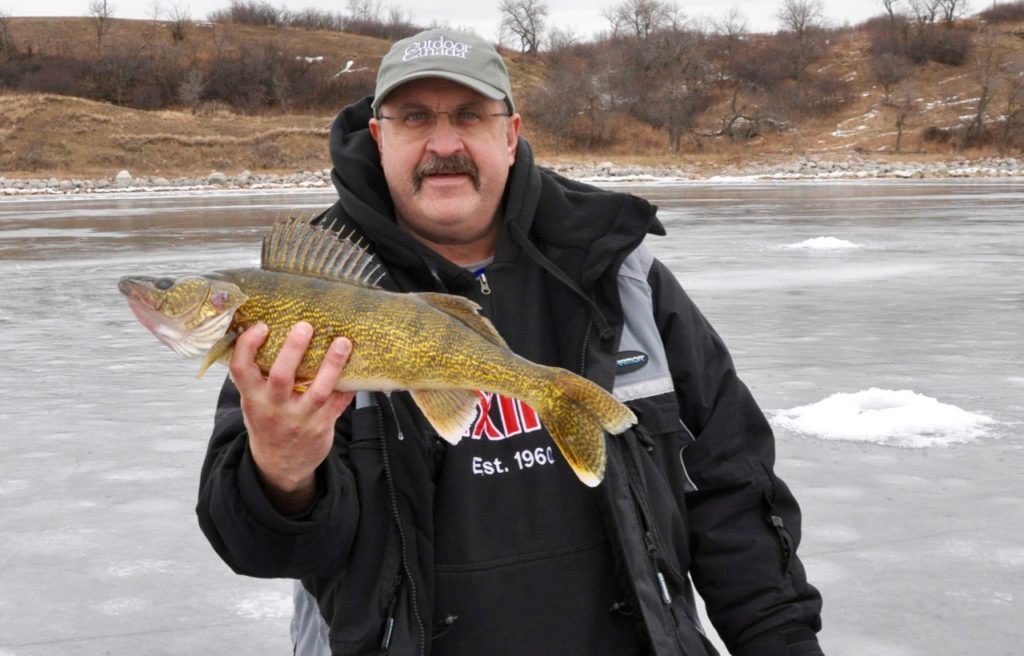Follow the feeders
To catch winter walleye through the ice, you need to stay mobile
Advertisement
RUNNING
Since the fish are on the move and typically don’t stay in the same place for long, you should also be prepared to keep moving. That means you need to pay attention and stay organized.
Advertisement
Once all the holes are drilled, set up your flasher where you anticipate the fish will be, which is usually at the deepest hole. If you start seeing and catching fish, don’t get too comfortable. Stay alert, and as soon as the action stops, move on to the next hole. If I go two minutes without seeing a walleye on my flasher, for example, I’ll move; I keep doing that until I get back onto fish. In many cases, a hole may produce one or two fish, then quickly dry up.

When moving with the walleye, you’ve got to be quick and efficient. To do that, I’ve developed a simple system for carrying my rod, flasher and other gear from hole to hole. With one hand, I carry my tackle tray, hole cleaner and spare rods in a five-gallon bucket, and with the other I carry my flasher and fishing rod. When I get to a hole, I set the flasher and pail on the ice, then drop the transducer followed by my lure down the hole. When it’s time to move, I simply reel up, grab the flasher and pail, and head to the next hole.


